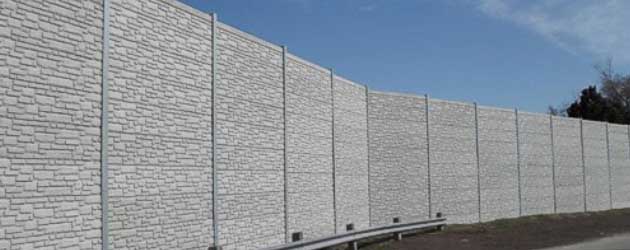What are Noise Barriers, and How Should They be Implemented?

Welcome to another edition of Frequently Asked Questions about Noise, Vibration, and Acoustics. In this video series, we answer the questions we hear most often from clients or through inquiries via our website.
My name is Harry Cai, a project consultant at HGC Engineering. Today’s question is: What are noise barriers, and how should they be implemented?
Noise barriers are a form of engineered noise control measure in the form of a fence, wall, an earth berm, or a combination of these. The goal of a noise barrier is to attenuate sound levels at a noise sensitive area, such as a patio or bedroom window to a desired level. Noise barriers are a common noise control measure to address excessive noise exposure that requires mitigation, such as in the case of a patio that is adjacent to a busy highway or railroad.
Common Scenarios Requiring Noise Barriers
There are two common scenarios where noise barriers are most effective. In the first scenario, noise barriers are often located close or at the noise sensitive area, such as in the case of having noise fences surrounding an outdoor amenity area.
Second, noise barriers are often found close to the noise source, such as having noise barriers surrounding a loud rooftop ventilation fan.
Noise Fences/Walls vs Privacy Fences
It is important to know that noise fences are different from a non-noise fence, such as a privacy fence. Privacy fences often have gaps in their construction and are only constructed to block sight-lines, whereas a noise fence must be constructed to a tight standard in order to be effective at attenuating sound.
To achieve this, noise fences need to have no gaps or cracks in their construction. Even small gaps or cracks can greatly reduce their effectiveness. Secondly, noise fences need to be constructed of a material of a sufficient mass in order to be effective in attenuating transmitted sound. Government and regulatory bodies often have guidelines on the minimum surface density required for noise fence materials. For example, in province of Ontario, the Ministry of Environment requires a minimum surface density of 20 kg per meter squared for acoustic barriers, whereas lower densities can be sufficient in certain scenarios if they are technically justified.
Noise Barrier Specifications
So how should noise barriers be implemented? Typically, noise barriers are first specified by acoustical engineers and the specifications often include the height and location of where it needs to go. The construction, the choice of material and the manufacturer is done at the discretion of the client based on the specifications given. The final design and construction of the noise barriers should then be verified to validate their performances. And this verification is often required by government or regulatory bodies prior to occupancy or for the release of securities from the municipalities.
Attributes of Noise Barriers
The following attributes of noise barriers should be verified: One, height. Noise barriers need to be of a sufficient height, depending on how much attenuation is needed. This is also dependent on the geometry, such as where the noise source is located, and where the noise sensitive area is located, and by the topography in between.
Second, noise barriers should be verified according to their specified location. Location is crucial in providing adequate protection. As previously mentioned, noise barriers are effective, either close or at the noise sensitive area or close to the noise source. Lastly, the construction and the workmanship and the material of the noise barrier should be verified as well. Noise fences and barriers should be constructed without gaps or cracks and be constructed of an appropriate material.
Noise Wall Construction & Materials
Now a variety of different materials can be used for the construction, such as wood, glass, pre-cast concrete, or metal, as long as they meet the material criteria. Noise fences can also be decorative, such as in the case of green noise walls, which are acoustically performing noise walls decorated with soil and plants.
Conclusion
In summary, noise barriers are specified by acoustical engineers and their final design, and construction should be verified to validate their performances.We hope this answers your question. If you have any other questions about noise fences or barriers, or any other questions you’d like to see answered in this video series, please feel free to reach out. Thank you and bye for now.

